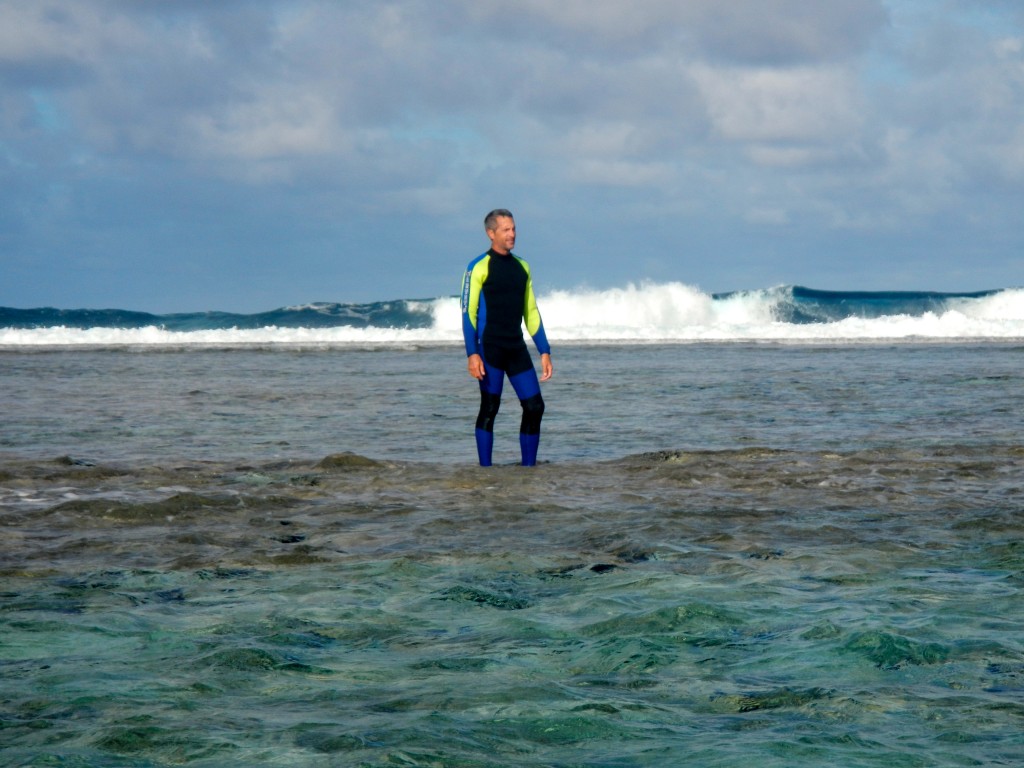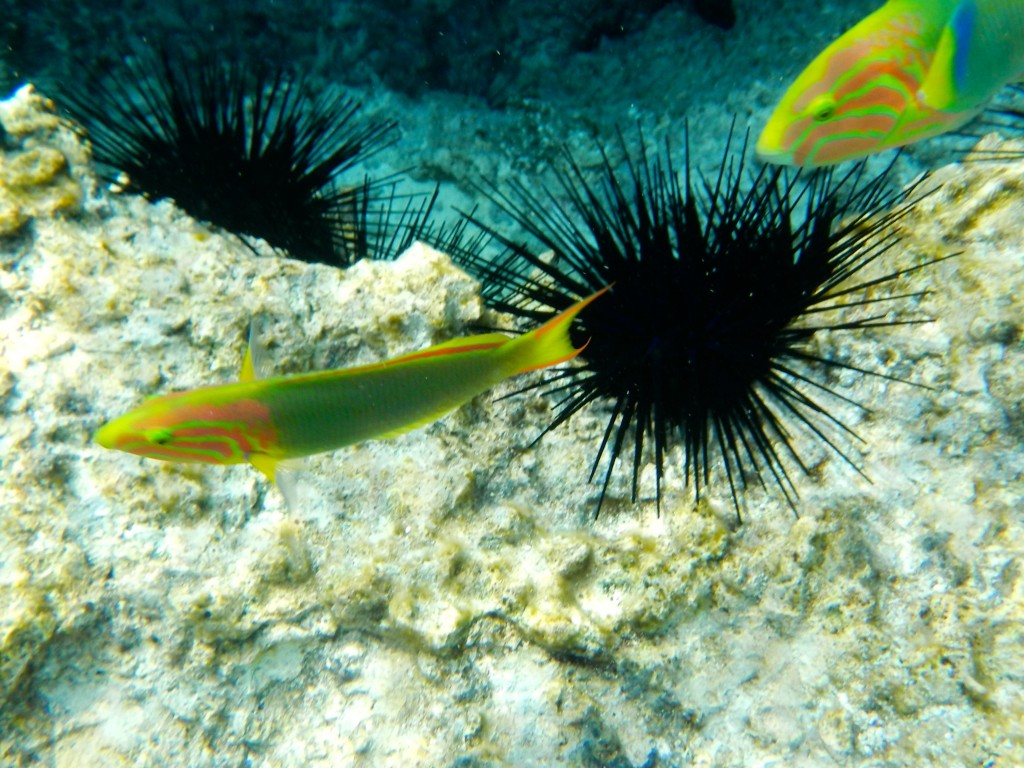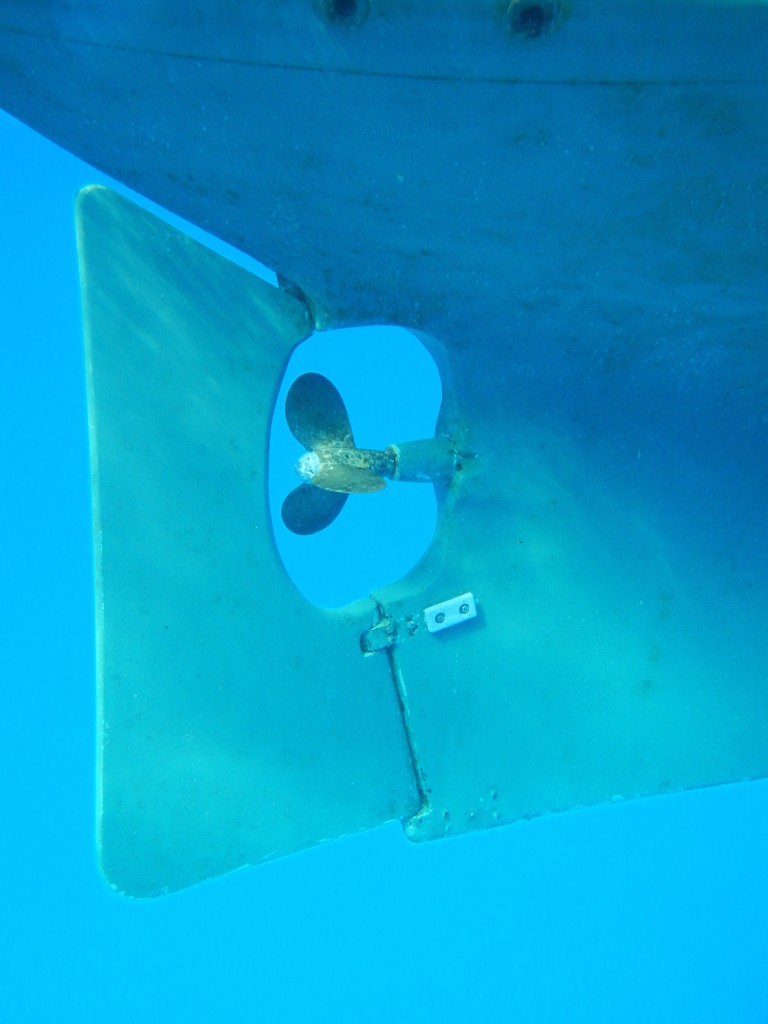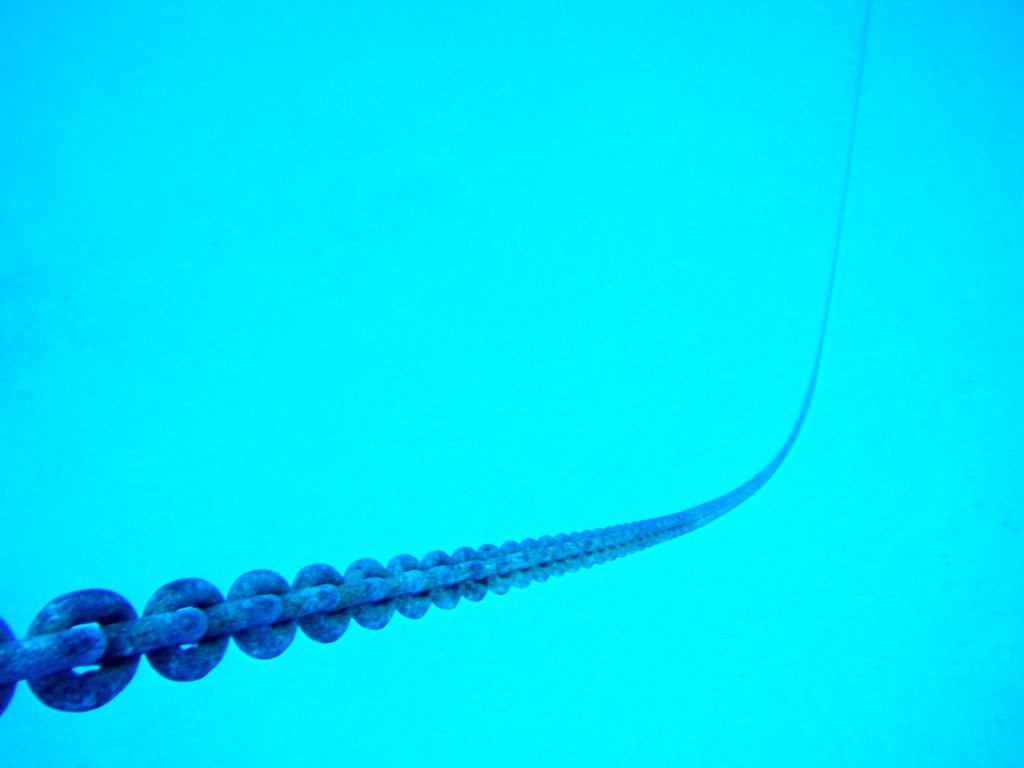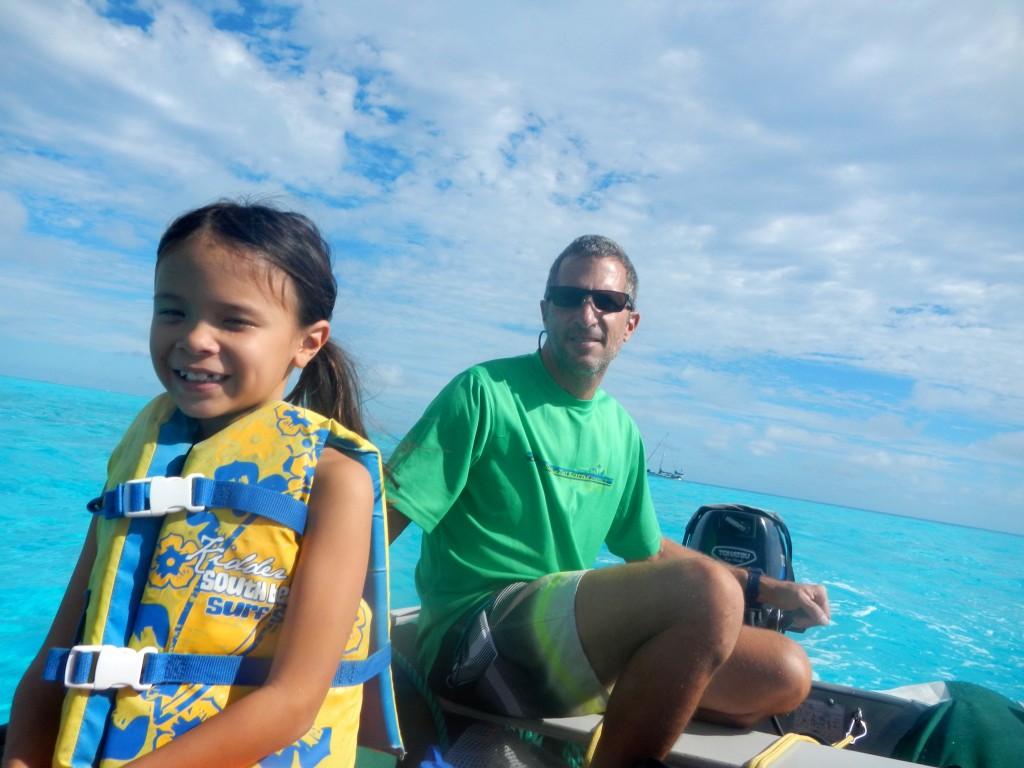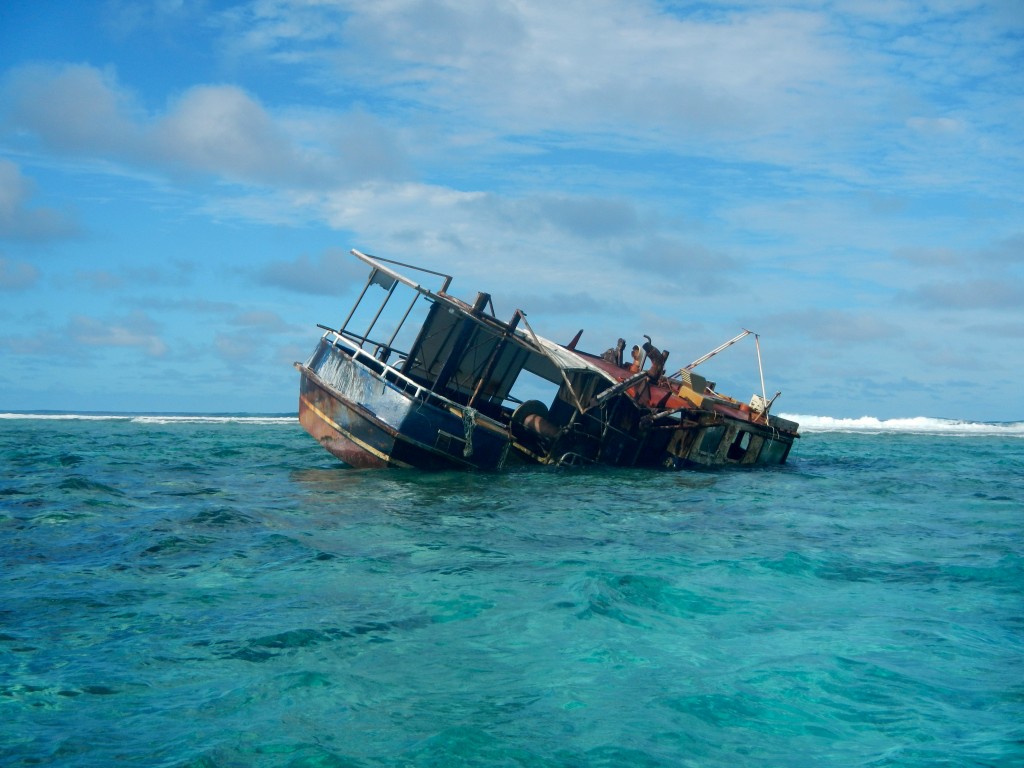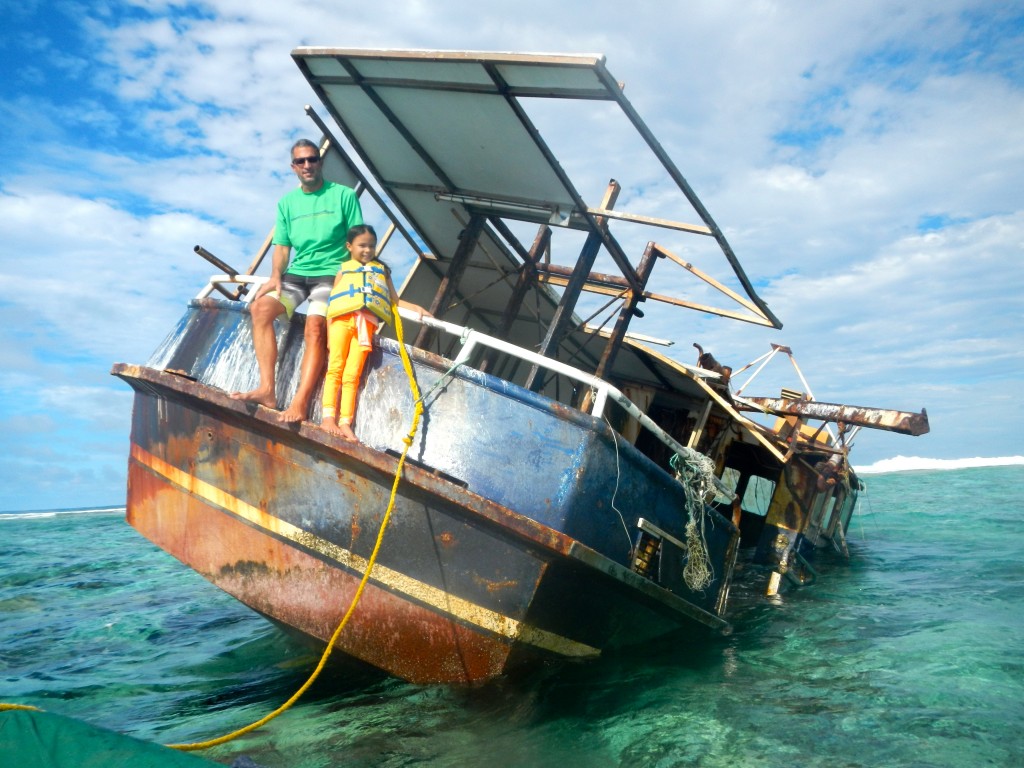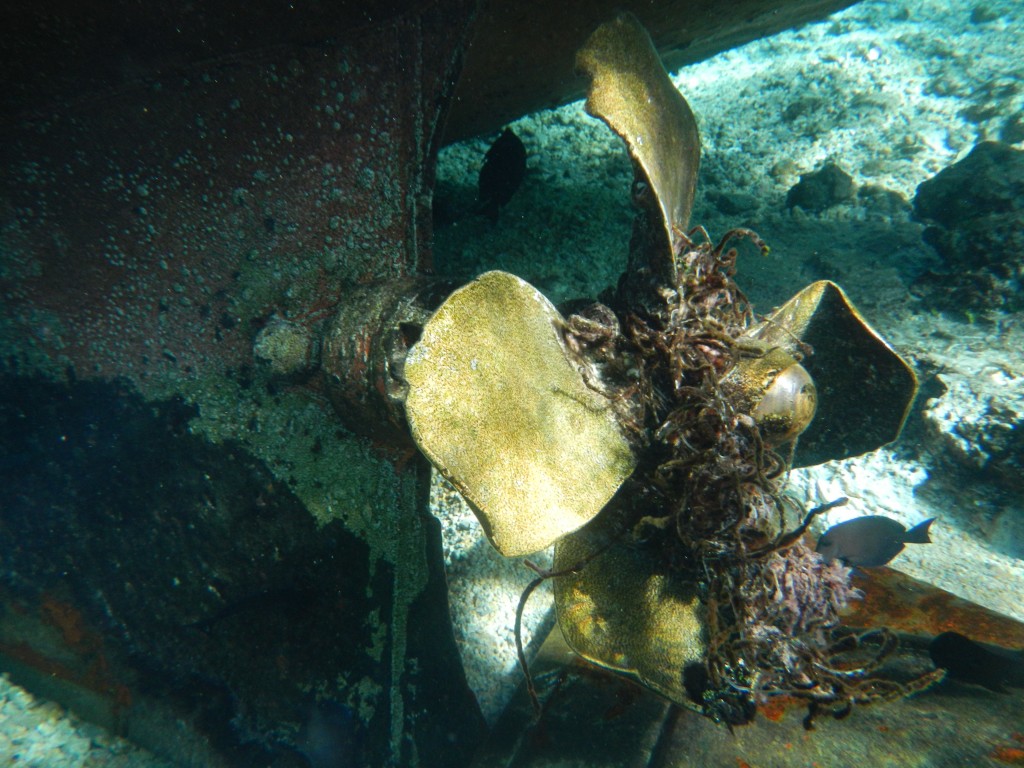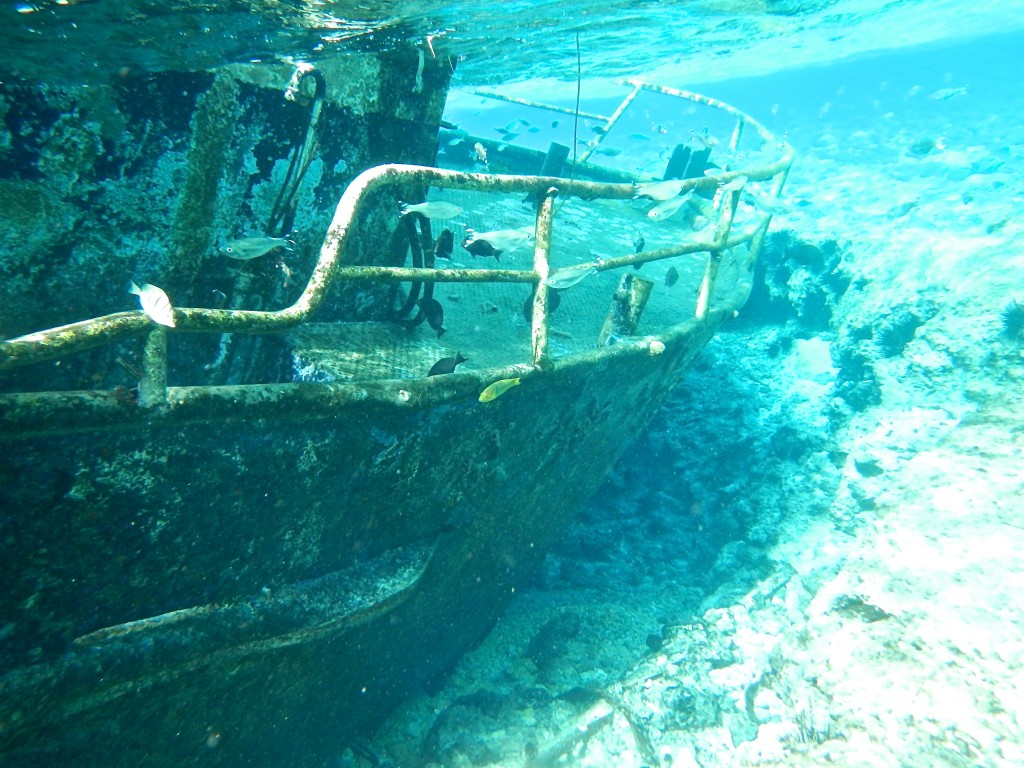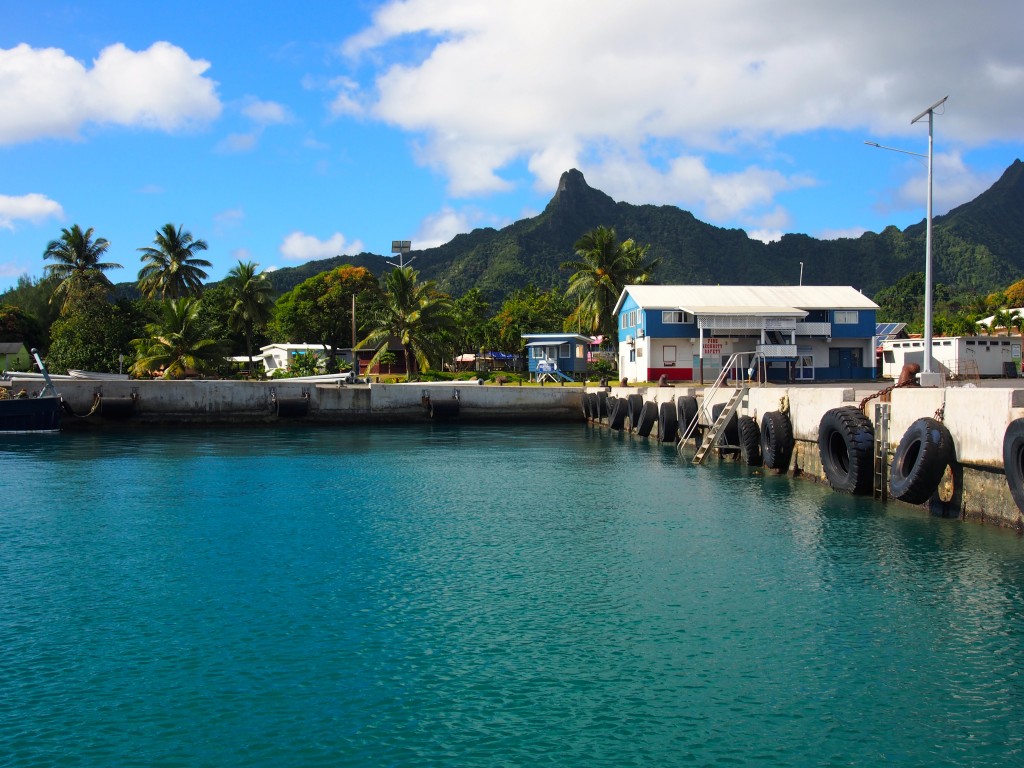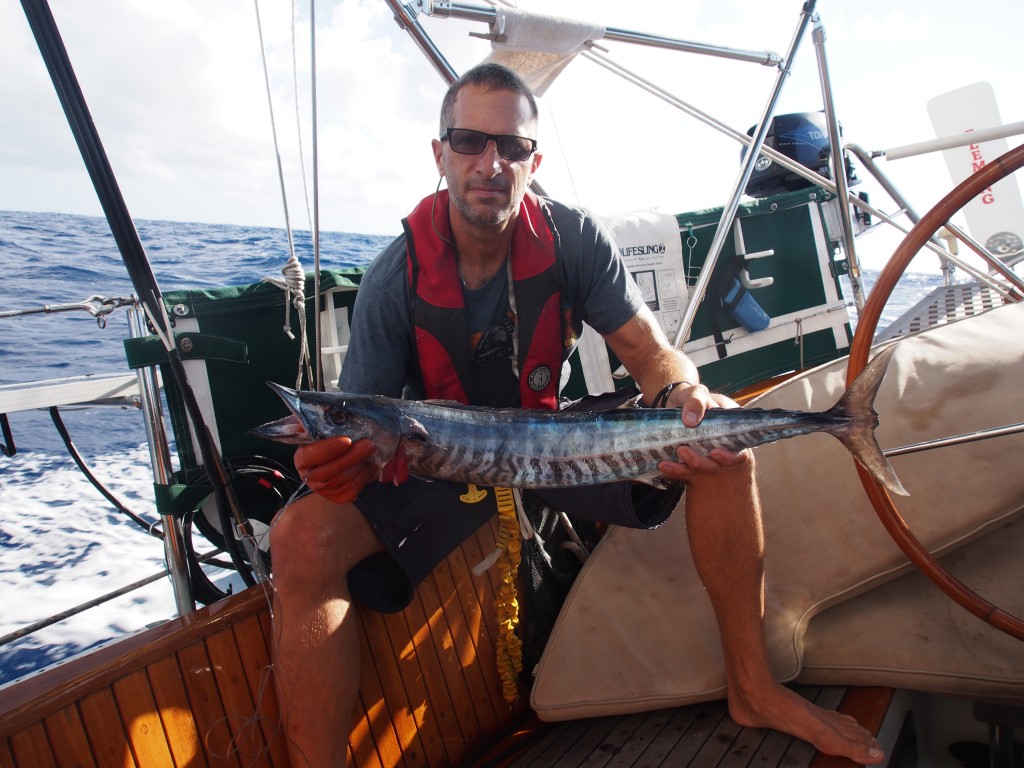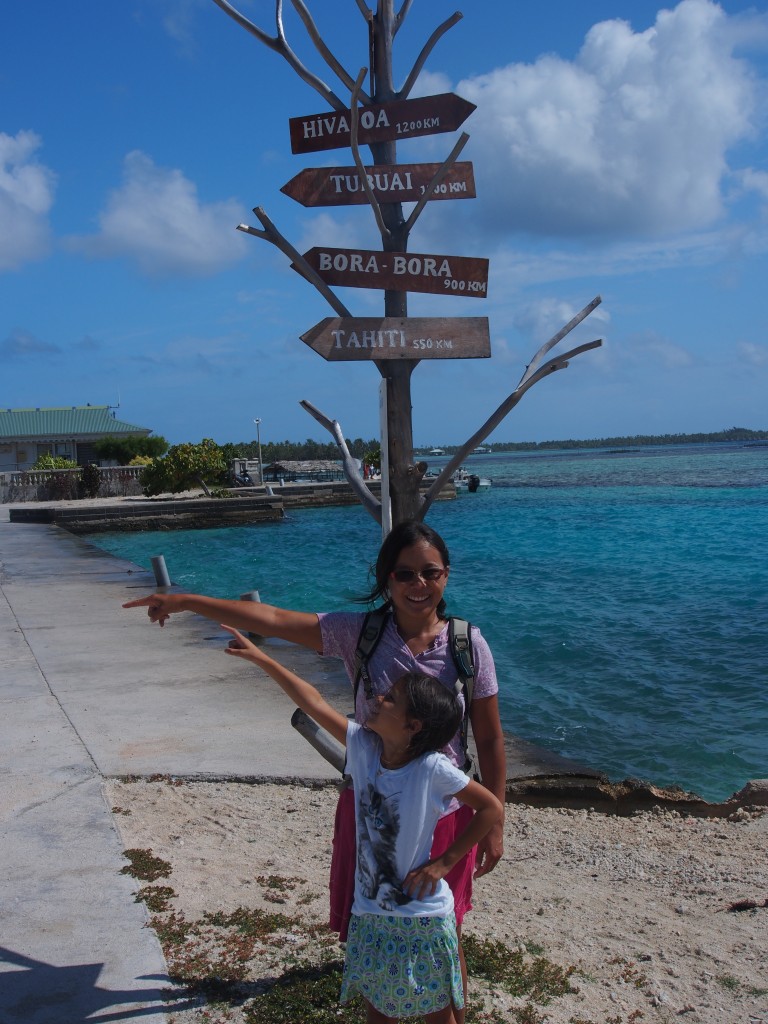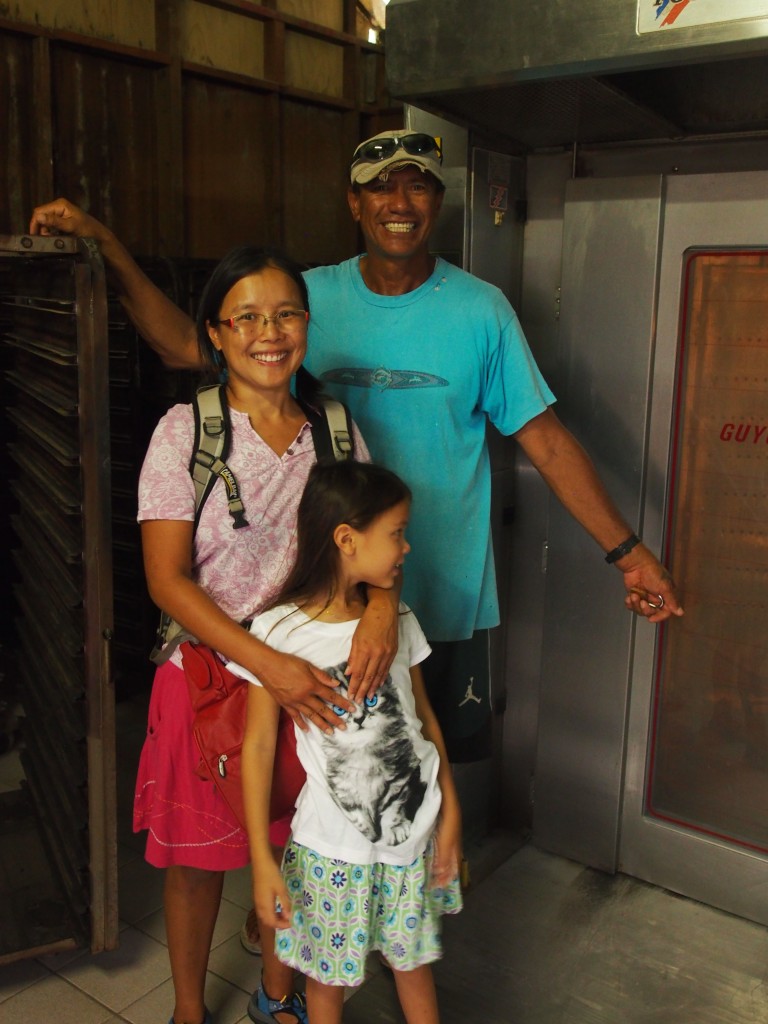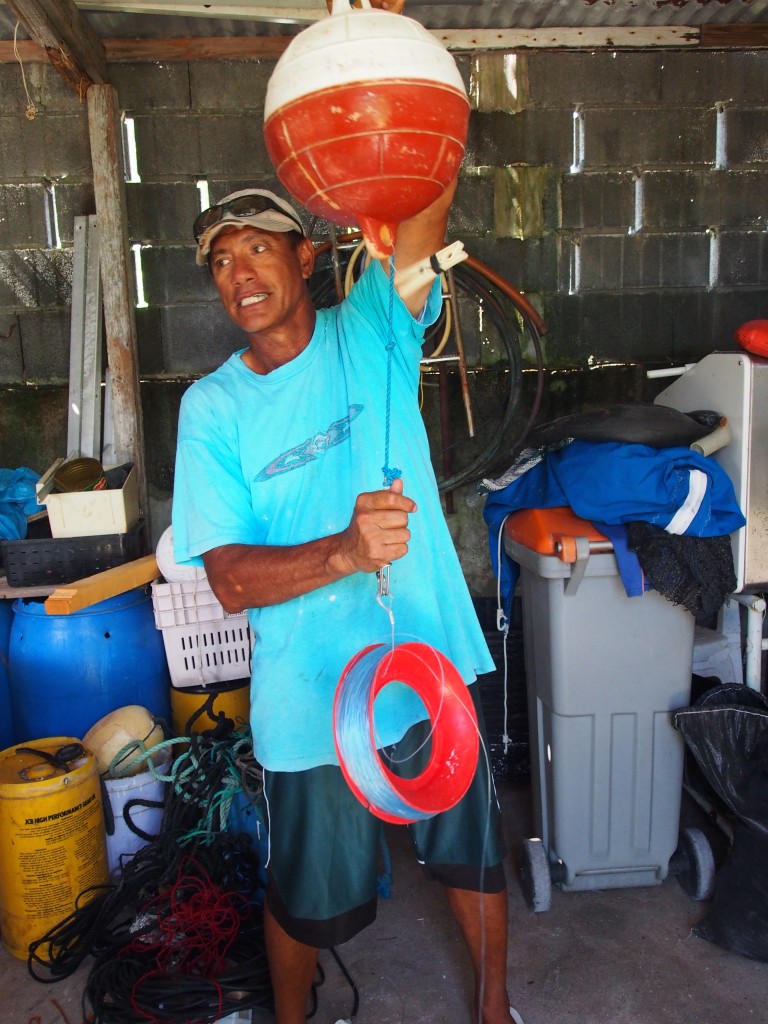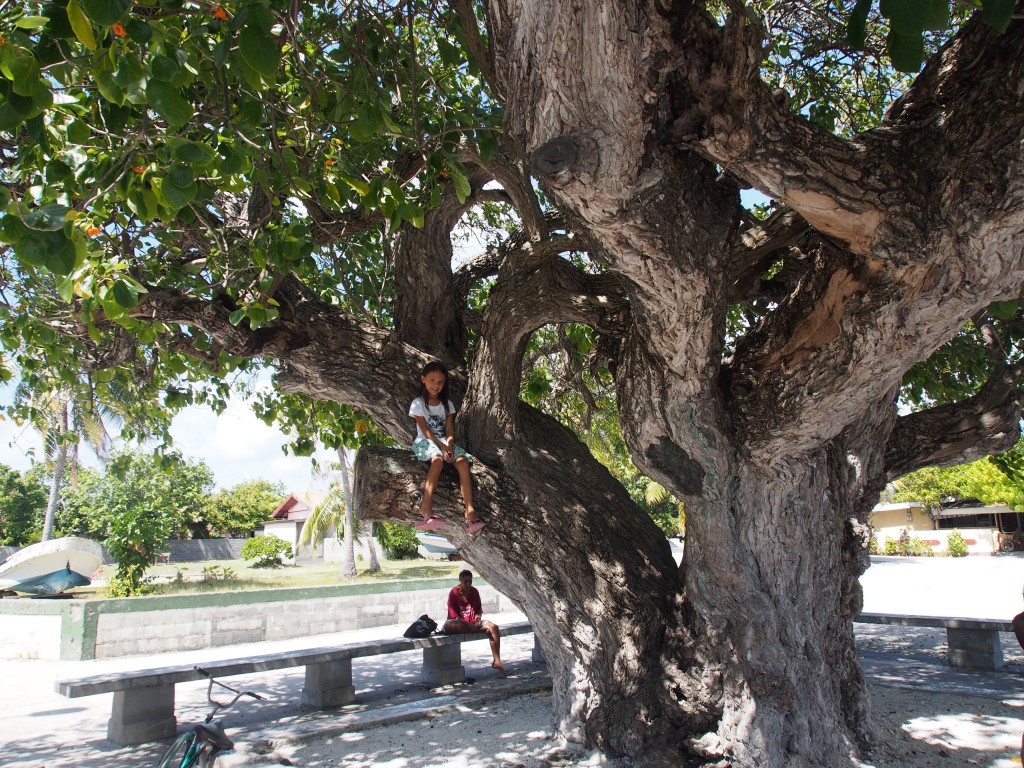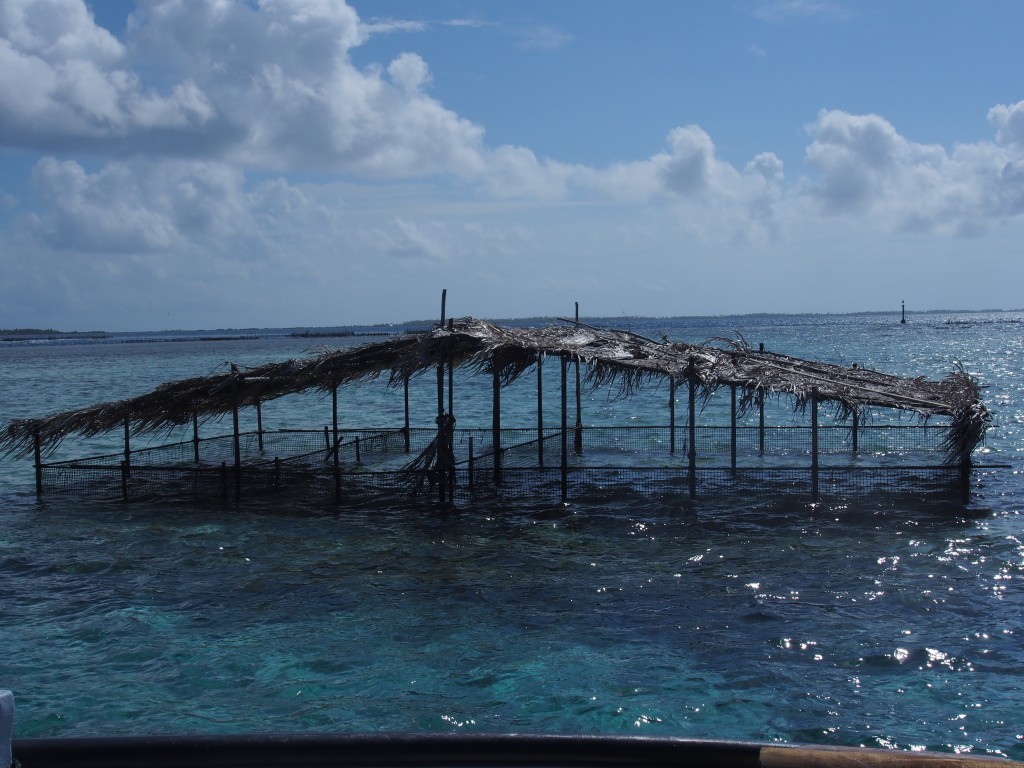We decided to stop at Beveridge Reef, located about 140nm E-SE of Niue. A cruising guidebook refers to this as one of those “out of this world experiences that shouldn’t be missed”. Beverage Reef is an isolated, horseshoe-shaped, completely submerged (at high tide) atoll with lots of coral and marine life inside. The only entrance into the lagoon is a small gap on the west end. Its turquoise-blue interior lagoon has a wide plateau of white sand that rims the inside of the reef, which is about 4 miles long and 2 miles wide. At high tide the surrounding reef is under water and there is nothing to be seen except the breaking waves on the outer reef and a wreck–a small fishing boat stuck in the coral’s unyielding grasp. This is not a good place to stop during heavy weather as the waves break over the reef and makes anchoring inside uncomfortable. The day we approached the reef, the winds were calm and we had to motor, so it just made sense to stop. We arrived at 3pm, crossed the lagoon, then anchored near the east side of the reef in 20′ of crystal clear water. As we crossed the lagoon, the depth never varied much from 30′. We saw grey sharks and a stingray swimming under the boat, and could hear the surf breaking on the reef 500 yards away. Our boat was completely still at low tide and barely rocked even at high tide. We celebrated our arrival with some nice, cold “beveridges”!
Two other boats were here when we arrived, and one stopped by in their dinghy to say hello. About 8 years ago, Ken and Beth on SV Eagle Wings sailed from Chicago through the Great Lakes, down the Atlantic coast, through the Caribbean and the Panama Canal, and across the Pacific download photoshop cs5. They now cruise between New Zealand and the South Pacific http://canadianviagras.com/.
We liked Beveridge Reef so much that we decided to spend another day. After a relaxing morning of reading and drinking coffee, we hopped in the dinghy and explored the wreck on the NE side of the reef. The MV Liberty was a steel fishing boat that has been on the reef for at least 8 years. We tied our dinghy to the stern and Jacintha and I hopped aboard. The wreck sits at an angle with the bow under water and the stern above. After snorkeling around it, it became obvious how it came to its end on the reef–a tangled line can still be seen wrapped around the propeller. I imagine they were fishing to the east of the reef when they fouled the prop, and were unable to free it before crashing. We were told that the captain and all the crew survived. Next we took the dinghy closer to the breaking waves until we were on the reef in 2′ of water. We dropped our dinghy anchor and walked onto the reef. At nearly low tide, we were standing in 6″ of water and about 50′ away huge waves were crashing onto the outer edge of the reef. It was an amazing experience to think we were over a hundred miles from land and were standing on the edge of a reef!
